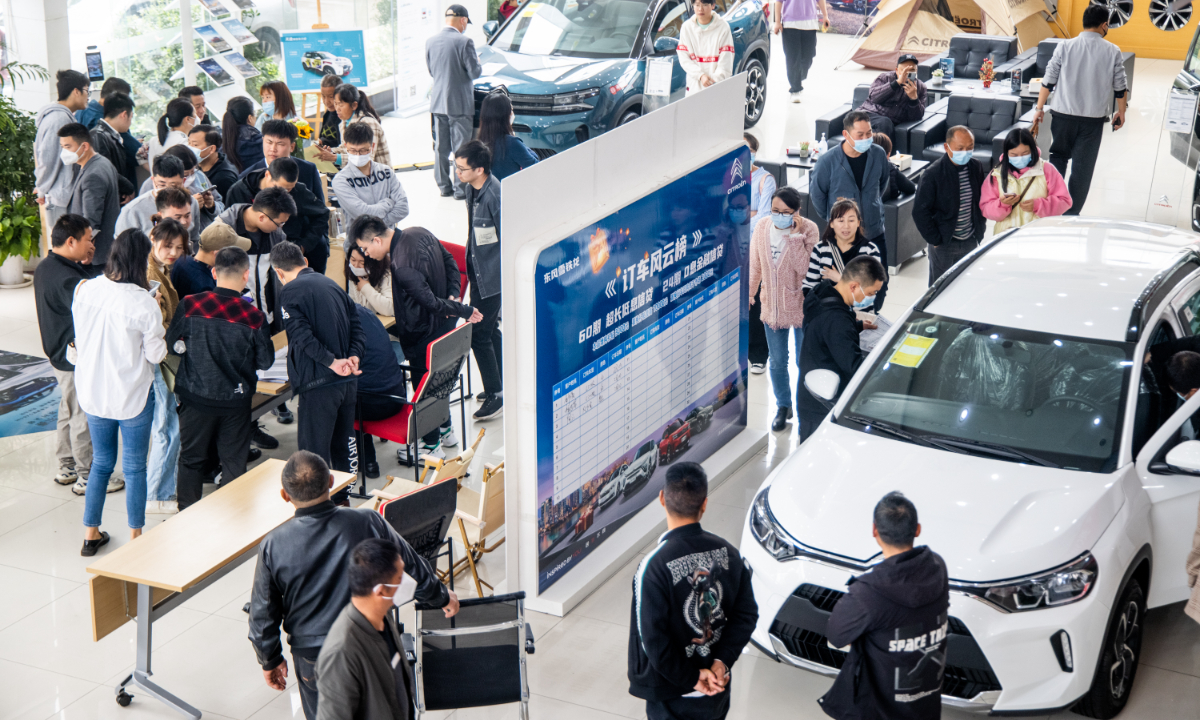

Trade Expo held in Changsha, Central China's Hunan Province, on June 29, 2023. Photos: Courtesy of Hunan-based Xiyue Cultural Media Co
Editor's Note: Against the backdrop that the world's major economies are struggling to stave off a recession, in the first half of 2023, China's economy rebounded relatively strongly post-pandemic, with catering, accommodation and tourism industries all booming. This again illustrates Chinese economy's unique resilience, solid fundamentals and great potential. Despite outside woes and uncertainties, China's economy is constantly undergoing transformation and upgrade, and the consumption sector is expected to play a more critical and prominent role in driving up growth. How to tap the full growth potential through ramping up domestic consumption? Yao Yang, Dean of the National School of Development at Peking University, shared his views.

Yao Yang Photo: Courtesy of National School of Development, Peking University
As China's economy is constantly undergoing transformation and upgrade, and the consumption sector is expected to play a more critical and prominent role in driving up growth, to further expand domestic market demand and promote consumption in the Chinese economy, the measure with the most potential power is to stimulate purchases of the two major consumer items - real estate and automobiles.
China's annual vehicle sales have exceeded 26 million, but the estimated maximum car consumption could reach 40 million in a year, which means that there is still ample room for market growth.
However, many cities have adopted restrictions on auto consumption, excluding many potential buyers with the spending power.
Big-ticket itemsAs for the real estate industry, under the premise of rationalizing the reform of housing price mechanism, the administrative purchase restrictions on home-buying could be considered drawing to an end. Many cities and counties now set price "floors" to prevent housing prices from falling, resulting in houses set at high asking prices but with no market. Appropriate reforms to related restrictions will greatly stimulate the recovery of property market sentiment.
Following the wind-up of the COVID pandemic in the beginning of this year, in-person consumption has recovered well, with service sectors including catering, accommodation and tourism all booming.
However, only after the potential consumption of real estate and automobiles, two bulk consumer items that have an important impact on the development of the national economy, is further released, the driving power of consumption on the national economy won't be more obvious.
China's economic recovery momentum has yet to be reactivated, ramped up and consolidated, and now it is high time to consider the removal of the administrative restrictions on those big-ticket items.
Consumption coupons
There have been constant calls for the issuance of consumption coupons or vouchers. If government departments are considering such measures, now is a good time to issue them.
And, the value of vouchers must be large enough, or at least 1,000 yuan ($140.4) for each Chinese resident, and the national scale of vouchers should reach 1.4 trillion yuan.
Issuance of such coupons could be a lot of help and may effectively stimulate China's domestic consumption, which is able to boost the economic growth.
It is estimated that a 100-yuan coupon can lead to 80-90 yuan of GDP, which is much higher than the 30 percent conversion rate of investment to GDP. Thus, 1.4 trillion yuan in issued coupons can generate about 1.2 trillion yuan in GDP, which is equivalent to driving up this year's GDP growth by at least 1 percentage point.
The country's central bank can consider issuing consumer vouchers to everyone's capital account through digital currency, and it could stipulate a time limit for using the vouchers.
If the government's restrictions on real estate and vehicles are lifted now, it could drive up this year's GDP growth by 1 percentage point. Also, 1.4 trillion yuan of vouchers can drive GDP growth up by another 1 percentage point. Together, the two measures are able to boost GDP growth by 2 percentage points.
Economic growth and employment are two sides of the coin. If the economy maintains a relatively high growth rate, the current employment problem can be greatly alleviated. In return, full employment will also promote the country's economic growth.
However, promoting consumption to stimulate economic growth is a short-term move, and China's long-term economic growth still depends on technological innovation and progress. We also need to further promote the flexible, efficient and targeted liquidity transmission of the financial system, channeling financial capital to technology industries, so as to maintain the long-term sound development of China's economy.
The author is Dean of the National School of Development, Peking University. bizopinion@globaltimes.com.cn






